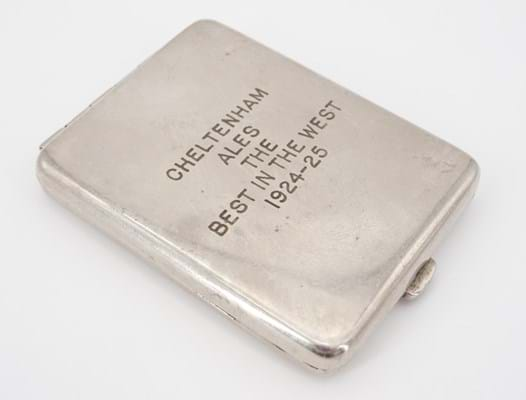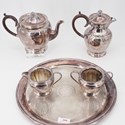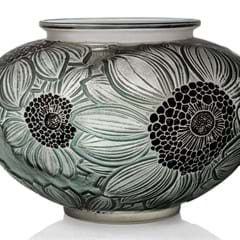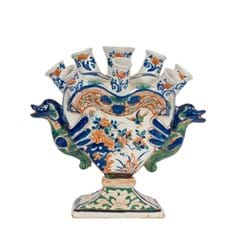Silver vs Silver plated: An expert's guide
Silver and silver plate may look similar but there are important differences between them which greatly affect their values at auction.
George IV silver salver by William Bateman, London 1824, 55oz - £750 at Woolley & Wallis, Salisbury, July 2022.
Silver is a precious metal that has long been admired for its practical and decorative qualities. Bullion quality silver is defined in the UK as having a purity of 925 parts per thousand. It is normally called ‘sterling silver’ but it is also sometimes referred to as ‘solid silver’.
Since the reign of Edward I (1272-1307) a system of testing or ‘assaying’ silver has been in place with assay offices around the country responsible for marking genuine items with a standard mark to prove their purity.
Historically the standard mark for sterling (.925 purity) silver in Britain has been a lion passant – a walking lion with the right fore paw raised – and this will be found on the majority of pieces made in the UK.
You can read more about silver hallmarks in our dedicated guide.
Typical items at auction made from silver include hollowwares (functional domestic items such as coffee pots and drinking vessels), flatware (items like cutlery) and smallwork (objects including silver boxes and nutmeg graters).
As sterling silver is considered the ‘genuine article’, values for items are typically ten-fold those of most silver plate alternatives.
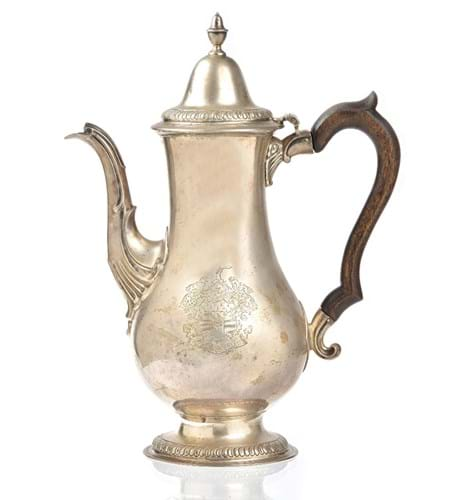
A George III silver coffee pot made in Newcastle by maker John Langlands and John Robertson in 1783. It sold for £700 at Bellmans in January 2020.
Old Sheffield Plate
A number of substitutes for silver have been created to mimic the appearance of silver but without the cost.
From the medieval period polished pewter (an alloy of lead and tin) performed the role adequately to be replaced in the 18th century by the first ‘silver plated’ objects. These items, sometimes referred to as ‘Old Sheffield plate’ fused together a thin layer of silver to the surface of a cheaper metal object, normally copper.
Sheffield plate – named after the city where the technology was developed – was manufactured in some quantity until about 1840 when it was superseded by electroplating technology. Pieces are rarely marked but they can be easily identified as the silver surface tends to wear away over time to reveal the copper core underneath. Applied leaded borders and mouldings also become visible after extensive polishing.

An Old Sheffield Plate campana-shaped wine cooler from c.1820, engraved with an armorial and a crest. It sold for £190 at Dreweatts in January 2020.
Old Sheffield plate will also feel harder to touch than silver as the underlying metal is more solid and lacks the ‘springiness’ of silver (the tension of which can be felt when you press your thumb on the item).
Old Sheffield plate is much more affordable than sterling silver. Many objects remain collectable – they were made in much the same way and in the same handsome forms as silver objects but now, just as in the Georgian period, it offers great value for money.
Electroplate
Electroplating was a process patented by George Elkington of Birmingham in c.1840. The process of electrolysis was used to apply a veneer of silver to base metals such as nickel and pewter. It was both cheaper and quicker to produce than Old Sheffield plate and rapidly superseded its earlier predecessor.
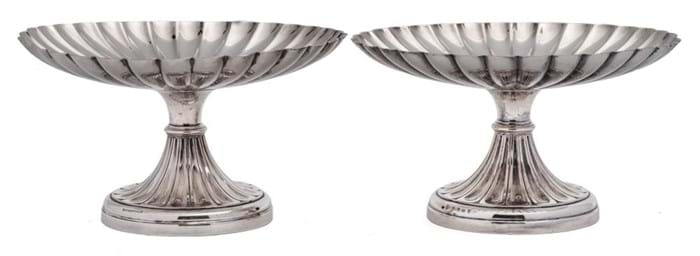
A pair of electroplate comports made by Elkington & Co, £55 at Bearnes Hampton & Littlewood in January 2020.
The items made using this technique were often brighter and lighter in appearance than Old Sheffield plate. However, as with all ‘plated’ objects the surface will wear away after years of polishing.
Electroplated items may carry a variety of marks – often in imitation of silver hallmarks. Since these were applied by manufacturers rather than assay offices, they were not subject to the same rigorous standards.
The initials ‘EP’ simply refers to electroplate. The mark ‘EPNS’ (electroplated nickel silver) and ‘EPBM’ (electroplated Britannia metal) may also be found on some pieces. ‘A1’ is another mark used determine the quality of plate.
Electroplated items will generally be described as ‘silver plate’ or ‘plated’ in auction catalogues. As most were mass produced in huge quantities supply tends to exceed demand and most pieces can be bought for just a few pounds each (many tea and coffee sets currently sell for under £30).
However, there are exceptions. Large-scale items (centrepieces, candelabra and meat covers) or Victorian novelties (folding biscuit boxes or figural condiment sets) do have a collectable value and so do some of the more experimental Elkington wares made to copy museum objects.
A field of its own are the electroplated wares made by firms such as Hukin & Heath, James Dixon and Elkington to the designs of the Victorian ‘industrial designer’ Christopher Dresser. Here radical Aesthetic movement design is far more important that the intrinsic value of the metal.
What to do next
Read our guides on related areas for further information on these areas:
Once you’re ready to start searching for silver and silver plate, decide how much you’d like to spend and use the search facility on thesaleroom.com to find pieces coming up for sale. You can filter your search by, among other things, price and by location of the auction house to narrow down your selection.
To research recent prices at auction to see how much different silver items sold for you can also try out the Price Guide.
If you are new to bidding check out our guides to buying at auction – it’s easy once you know how.


